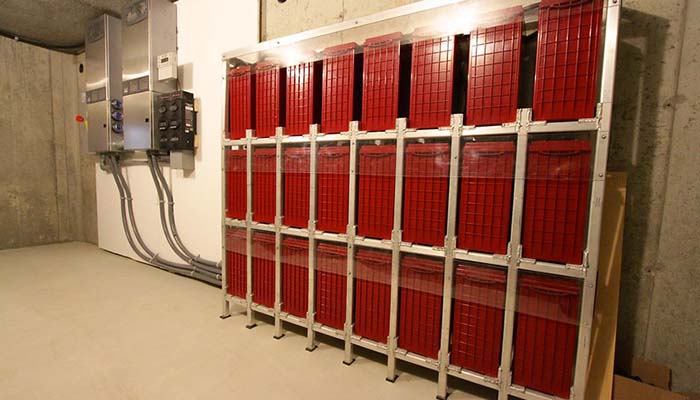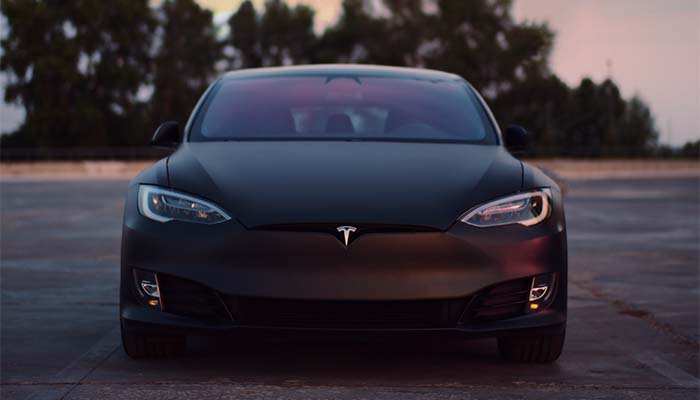
Updated January 19, 2022
Home solar batteries store the excess electricity produced from solar panels that isn’t used immediately so that it can be used later. Solar panels are only as effective as the amount of sunlight that they receive. At night or during cloudy days, solar panels may not be able to produce enough electricity to keep your home powered. That’s where solar batteries come into play.
Under normal circumstances, solar panel systems are typically designed to produce enough power to offset a home’s electrical usage. Excess energy that is produced can either be stored in a home solar battery for later use or sent back to the grid through net metering. Solar batteries allow for energy harnessed during the day to be used throughout the night or during other times of need.
Benefits Of Home Solar Battery Storage
Solar panels are most effective throughout the middle of the day. Ironically, the middle of the day is when homes use the least amount of electricity. Homes typically consume the most electricity at night to light their homes, power their smart devices, and more. If you think about it, a home is typically empty throughout the day as parents are at work and the kids are in school.
In a regular grid-tied solar panel system, excess electricity that is generated throughout the day goes back out to the electrical grid for use elsewhere. At night, the homeowner is forced to purchase energy from the grid to power their home. Unfortunately, most of the energy purchased from the grid at night is produced by the combustion of fossil fuels.
Solar panel systems with battery storage are called hybrid systems. Excess electricity that is produced during the day is stored in either a lithium-ion or lead-acid battery. Having access to energy storage allows homeowners to be more self-sustaining and energy independent. Solar batteries maximize energy consumption and reduce the amount of electricity that needs to be purchased from the grid.
Factors To Consider
Not every solar panel system is outfitted for home solar battery storage. Hybrid systems are most beneficial to homeowners who live in areas that experience frequent blackouts and where net metering isn’t available. Other factors to consider include cost implications, the different types of batteries, and more:
Battery Types
- Lead Acid Batteries: Lead acid batteries have been around for decades. They are tried and true, reliable, and one of the least expensive options on the market. Unfortunately, lead acid batteries are quickly becoming obsolete as they have a lower depth of discharge (DoD) rating, less capacity, and shorter lifespan.
- Lithium-Ion Batteries: Lithium-ion batteries have the highest depth of discharge rating, more capacity, and a longer lifespan. Additionally, they are more compact and more reliable. Lithium-ion batteries are the most commonly used battery types for solar battery storage in modern hybrid systems. Unfortunately, lithium-ion is much more expensive than its lead acid counterpart.
- Saltwater Batteries: Saltwater batteries utilize the positively charged ions from sodium to capture, store, discharge energy instead of a more hazardous lithium. Saltwater batteries are the most environmentally friendly option as is don’t use as many hazardous materials as the other two battery types. Unfortunately, saltwater batteries are new to the market and largely untested.
Cost Considerations
From strictly a cost perspective, studies show that solar batteries may not be worth the installation and maintenance fees if you live in an area with full net metering. For environmental reasons, solar batteries offer independence from tapping into fossil-fuel-produced energy from the grid.
Lead-acid batteries can be obtained as cheaply as $213. For a typical 5kW system, about eight batteries are needed. Lithium-ion batteries cost anywhere from $10,000 to $30,000. Saltwater batteries vary greatly but typically cost around $5,000. The upfront cost should be taken into consideration along with installation and maintenance costs, which vary greatly from system to system. Maintenance typically costs anywhere from $100 to $3,200 per year.
Other Considerations
Temperatures greatly impact the performance of home solar battery storage systems. For optimal performance, solar batteries should not be stored outside in cold temperatures. Batteries rely on chemical reactions to store and discharge electricity. Cold weather slows down the chemical reaction process and causes batteries to discharge more quickly. A rule of thumb is that batteries should not be stored in areas that get colder than 32 degrees Fahrenheit or warmer than 80 degrees. Depending on the local climate, a solar battery should be stored outside, in the garage, or even in the basement.
Conclusion
Home solar battery storage systems work by storing surplus energy produced throughout the day for use at night or other times of need. These battery systems prevent electricity waste, increase energy independence, and are more environmentally friendly than purchasing energy from the grid. Factors to consider include battery type, upfront cost, installation, maintenance, and even temperature. Overall, home solar battery storage systems are most beneficial to homeowners who live in areas without access to net metering or experience frequent power outages.



